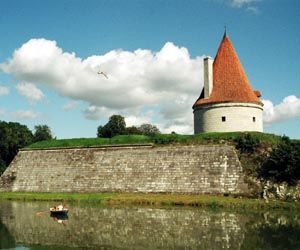Cheapest Cities to Visit in Europe
Lindsey Wooldridge
European vacations are very expensive, especially if you’re visiting places like London or Paris. If you want to go to Europe without going broke, visit the cities listed below. As a rule of thumb, the cheapest cities tend to be in Eastern Europe.
Budapest, Hungary
The capital of Hungary is an interesting, cosmopolitan city that should not be underestimated. Budapest’s beautiful historic section is Castle Hill on the Buda side of the Danube. Across the river is Pest, the sprawling and hectic center of the modern city that saw much of its development at the turn of century. Budapest is possibly more active, enticing, and bewildering than any other European city. Here, business people from as far as Moscow and London brush shoulders on the subway while youth from all over the world enjoy the city’s many great cafés, bars and clubs. It’s a gritty city still left to its locals and savored for its pounding, pensive energy.
Istanbul, Turkey
Sultanahmet, the old city of Istanbul, plays host to the majority of tourist sites. All are within a short walking distance of each other. Start with the Topkapi Palace, Blue Mosque, Saint Sophia Museum, Hippodrome, Underground Cistern, Grand Bazaar and Egyptian Spice Markets. If these aren’t enough, get out of touristville and visit the Dolmabahce Palace, Camlica Hill (highest point in Istanbul on the Asian side), cruise up the Bosphorus (stretch of water separating Europe from Asia) or check out the Prince’s Islands in the Marmara Sea. If it’s bars you’re after, Akbiyik Caddesi is lined with cafés and bars, but if you wish to go where the locals go, try Taksim or Ortakoy
Ljubljana, Slovenia
In Ljubljana travelers can experience the small town “feel” while taking advantage of this capital city’s resources, history and culture. Being centrally located in Slovenia it makes for a good base to explore the country’s mountains, lakes and caves. There are few “must-see” attractions, but it is worth a visit for its lively, youthful energy. Absorb the atmosphere with a stroll through the Baroque old town where you will find many quaint cafés along the Ljubljanica river and street performers playing tunes in the main square. The large student population provides for an active nightlife. Some of the hippest clubs have been converted from old army barracks, a reminder of Slovenia’s recent past as part of the former Yugoslavia. This is a progressive place with a kind, helpful folk willing to engage in conversation in a multitude of languages.
Dubrovnik, Croatia
Located at the southern tip of Croatia, Dubrovnik is the country’s most famous destination. It was heavily bombed in the civil war of the early ‘90s, but with substantial international aid has rebuilt and regained its splendor. During medieval times Dubrovnik held off Venetian aggression. The testament to this strength is in its powerful city walls. Spend a day exploring the old town or hop the ferry to Lokrum Island to relax in more natural surroundings. For true day trips, look into the Elaphite Islands, Mljet National Park and Cavtat.
Sarajevo, Bosnia
Sarajevo rests in the Miljacka River valley and is surrounded by the mountains which were home to the 1984 Winter Olympics. The recent war in Bosnia devastated the city and its inhabitants, and although the scars are visible in the shell-shocked pavement (referred to as roses) and demolished buildings, the progress is substantial. Much has been rebuilt and streetcars now zip down the road once dubbed “Sniper’s Alley,” the street where civilians were shot from the hills above. Although tourism is still in its nascent stage, the spirit and recovery is deeply moving. Sarajevo is famous for its International Film Festival and thrives on culture and the arts. The people are warm and forthcoming and may respectfully approach you with offers of private accommodation.
Krakow, Poland
Kraków is the most visited city in Poland and for good reasons. Boasting the largest medieval square in all of Europe, the old town shines with historic majesty and a nightlife that pumps into the morning hours. A visit to the city is incomplete without a walk around the infamous Jewish quarter of Kazimierz, once home to 65,000 Jewish residents and now less than 200. Get a taste for Polish cuisine with borsch (soup made from beets) and pierogis (like raviolis) - those with a cholesterol conscience beware! Kraków’s location in the southern part of the country makes it an easy stopover between Prague and Budapest on the Eastern European wiggle path. Auschwitz is a day trip and although gut wrenching, it is not to be missed!
Tallinn, Estonia
Estonia’s miraculous capital is bound to inspire awe. It’s an exciting, thriving center that has recently emerged from Soviet occupation, with many breathtaking Gothic buildings that have somehow escaped war damage. Tallinn’s Old Town is one of the last remaining truly medieval cities in Europe, with subterranean bars that serve locally-made vodka and absinthe and cast an enticing glow from their stone doorways. You can walk the dozens of winding, cobbled streets within the high wall and ramparts, and then stop for a cheap sandwich made on native thin, dense black bread at one of the many cafés, or “kohviks.” Still relatively undiscovered by visitors outside of the EU, this port city is becoming a weekend destination for many of its neighboring countries. It’s just a 45-minute ferry ride from Helsinki, a quick train trip from St. Petersburg and is easily accessible from Sweden and Germany.
Riga, Latvia
Riga is a genuinely beautiful old capital that is just waking up and reinventing itself. With one of the finest collections of Jugendstil (Art Nouveau) buildings anywhere in the world, Riga is a feast for the eyes and exhilarating to explore on foot. The movement’s eclecticism shows in ornate tiled entrances, smooth-faced giant modern gargoyles, and stained glass in intricately webbed ironwork. Along these museum-like streets, you’ll find a mix of the old and the new, from headscarved women selling bunches of flowers to younger urbanites congregating among the beer terraces, cafés and late-night clubs. Smart and cosmopolitan, Riga is quickly working to regain its 1930s reputation as the “Paris of the Baltics.”
Berlin, Germany
Surprisingly, Berlin is still a relatively inexpensive city to visit. While Paris and London have traditionally served as the centers of changing European culture, attracting active and radical people from around the world, today the real modern European cultural hot-spot is Berlin. With a cutting-edge arts scene, terrific cafés, imaginative modern architecture and distinct and vibrant neighborhoods, it is impossible not to leave Berlin impressed, if not awestruck. Surprisingly, Berlin is far from being over-touristed. Walking the streets, you will not see crowds following umbrellas or busloads of camera-toting foreigners. Berlin should be visited for its pulsating social and cultural scene that is original, new and inspiring. Make sure to get the Berlin Welcome card to get free transportation and discounts on several attractions.
Featured Articles
If you are looking to sum up Barcelona in one word, in a city as large and eclectic as this Spanish gem, it is possible: colorful.
From multi-tier cakes to underground record shops, truly neighborhood restaurants (where English might not be on the menu) and where to rent a bike that won't make you look like a tourist - this guide brings you seven fairly hidden - and absolutely delightful spots in Amsterdam for those looking for something different.
Ireland’s capital offers plenty to see in its own right, but the chance to get away and take a look at some of the trademark greenery of the emerald isle shouldn’t be missed.
High on the list of day trips is Karlovy Vary, a town located near the German border in what is considered the Bohemia area of the Czech Republic
When you think of the Netherlands, “culinary expertise” is not a phrase that comes to mind.
Free Backpacking Europe Planning & Essentials Guide
Download/More info on the Backpacking Planning and Essentials Guide
Featured Articles
If you are looking to sum up Barcelona in one word, in a city as large and eclectic as this Spanish gem, it is possible: colorful.
From multi-tier cakes to underground record shops, truly neighborhood restaurants (where English might not be on the menu) and where to rent a bike that won't make you look like a tourist - this guide brings you seven fairly hidden - and absolutely delightful spots in Amsterdam for those looking for something different.
Ireland’s capital offers plenty to see in its own right, but the chance to get away and take a look at some of the trademark greenery of the emerald isle shouldn’t be missed.
High on the list of day trips is Karlovy Vary, a town located near the German border in what is considered the Bohemia area of the Czech Republic
When you think of the Netherlands, “culinary expertise” is not a phrase that comes to mind.
Free Backpacking Europe Planning & Essentials Guide
Download/More info on the Backpacking Planning and Essentials Guide




